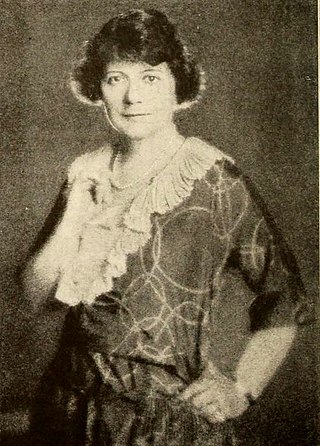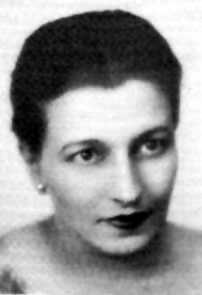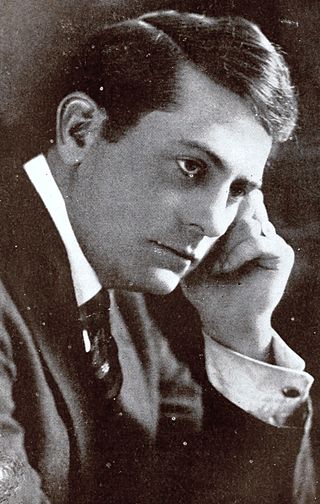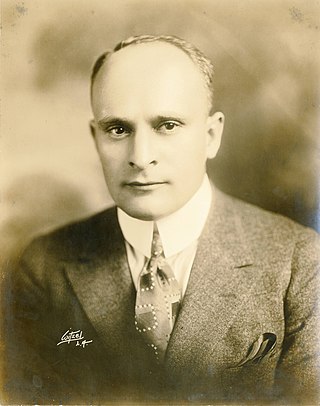Related Research Articles

Florence Turner was an American actress who became known as the "Vitagraph Girl" in early silent films.

Gene Gauntier was an American screenwriter and actress who was one of the pioneers of the motion picture industry. A writer, director, and actress in films from mid 1906 to 1920, she wrote screenplays for 42 films. She performed in 87 films and is credited as the director of The Grandmother (1909).

Ruth Roland was an American stage and film actress and film producer.

Hagar Wilde was an American novelist, short story writer, playwright, and screenwriter from the 1930s through the 1950s. She is perhaps best known for the screenplays for Bringing Up Baby (1938) and I Was a Male War Bride (1949), two Howard Hawks films, both starring Cary Grant.

Grace Cunard was an American actress, screenwriter and film director. During the silent era, she starred in over 100 films, wrote or co-wrote at least 44 of those productions, and directed no fewer than eight of them. In addition, she edited many of her films, including some of the shorts, serials, and features she developed in collaboration with Francis Ford. Her younger sister, Mina Cunard, was also a film actress.

Marion Fairfax was an American screenwriter, playwright, actress, and producer.

Marshall Ambrose "Mickey" Neilan was an American actor, director, producer, and screenwriter, whose work in films began in the early silent era.

Maude Fealy was an American stage and silent film actress whose career survived into the sound era.

Marguerite Snow was an American silent film and stage actress. In her early films she was billed as Margaret Snow.

Lenore Jackson Coffee was an American screenwriter, playwright, and novelist.

Edwin August Phillip von der Butz was an American actor, director, and screenwriter of the silent era.

Ella Augusta Hall was an American actress. She appeared in more than 90 films between 1912 and 1933.

Lillian Walker, born Lillian Wolke, was an American film actress of the silent era. She appeared in more than 170 films, most of them shorts, between 1909 and 1934.

Charles Gardner Sullivan was an American screenwriter and film producer. He was a prolific writer with more than 350 films among his credits. In 1924, the magazine Story World selected him on a list of the ten individuals who had contributed the most to the advancement of the motion picture industry from its inception forward. Four of Sullivan's films, The Italian (1915), Civilization (1916), Hell's Hinges (1916), and All Quiet on the Western Front (1930), have been listed in the National Film Registry.

Harold Marvin Shaw was an American stage performer, film actor, screenwriter, and director during the silent era. A native of Tennessee, he worked in theatrical plays and vaudeville for 16 years before he began acting in motion pictures for Edison Studios in New York City in 1910 and then started regularly directing shorts there two years later. Shaw next served briefly as a director for Independent Moving Pictures (IMP) in New York before moving to England in May 1913 to be "chief producer" for the newly established London Film Company. During World War I, he relocated to South Africa, where in 1916 he directed the film De Voortrekkers in cooperation with African Film Productions, Limited. Shaw also established his own production company while in South Africa, completing there two more releases, The Rose of Rhodesia in 1918 and the comedy Thoroughbreds All in 1919. After directing films once again in England under contract with Stoll Pictures, he finally returned to the United States in 1922 and later directed several screen projects for Metro Pictures in California before his death in Los Angeles in 1926. During his 15-year film career, Shaw worked on more than 125 films either as a director, actor, or screenwriter.

Miriam Battista was an American actress known principally for her early career as a child star in silent films. After gaining notice in Broadway theatre at the age of four, she was cast in films the same year. Her most famous appearance was in the 1920 film Humoresque in which she played a little girl on crutches. As an adult, Battista acted in Italian-language films in the 1930s, and she appeared in Broadway productions. She wrote, sang, composed music, and co-hosted a television talk show with her second husband.

Frances Agnew was an American screenwriter active during the 1920s.

Alma Webster Hall Powell, also known as Alma Webster Powell or Alma Webster-Powell, was an American operatic soprano, suffragist, philanthropist, writer, film scenarist, inventor, and member of the Socialist Party.

Gwendolyn Pates, also billed as Gwendoline Pates, was an American actress in silent films and on stage.
References
- ↑ "23 Dec 1904, 4 - The Iola Weekly Record at Newspapers.com". Newspapers.com. Retrieved 2019-03-13.
- ↑ "The Marriage of William Ashe Original Broadway Cast - 1905 Broadway". www.broadwayworld.com. Retrieved 2019-03-13.
- ↑ "Leona Radnor". Internet Broadway Database. The Broadway League. Archived from the original on 17 March 2019. Retrieved 17 March 2019.
- 1 2 "7 Jul 1912, Page 34 - The St. Louis Star and Times at Newspapers.com". Newspapers.com. Retrieved 2019-03-13.
- ↑ Motion Picture. Macfadden-Bartell. 1912.
- 1 2 "1911 Motion Picture Story Costello Story Swayne | #34761466". Worthpoint. Retrieved 2019-03-13.
- ↑ "Chats With the Players". Motion Picture Story Magazine. October 1912.
- ↑ Radnor, Leona (1913). The Photoplay Writer. L. Radnor.